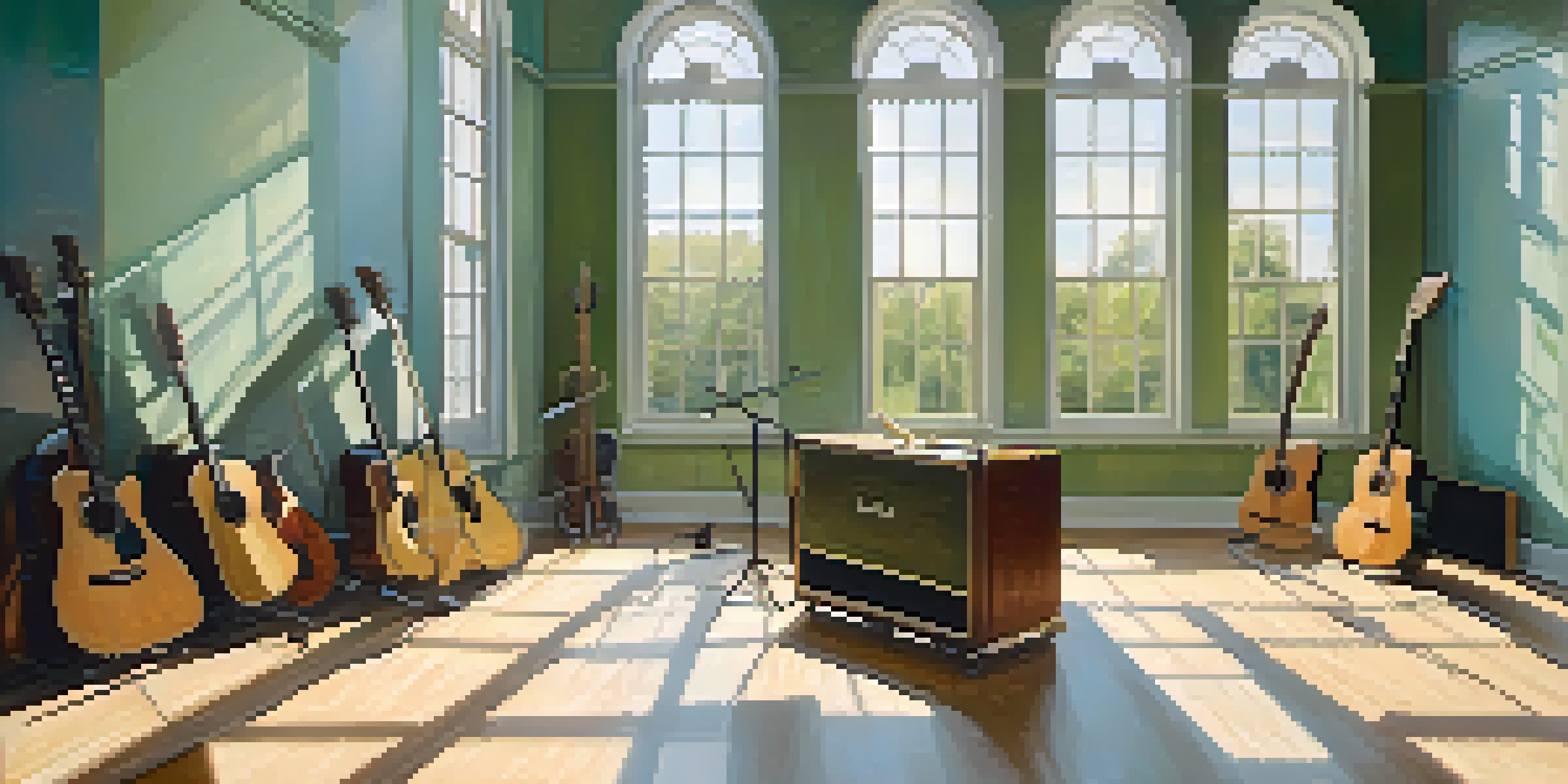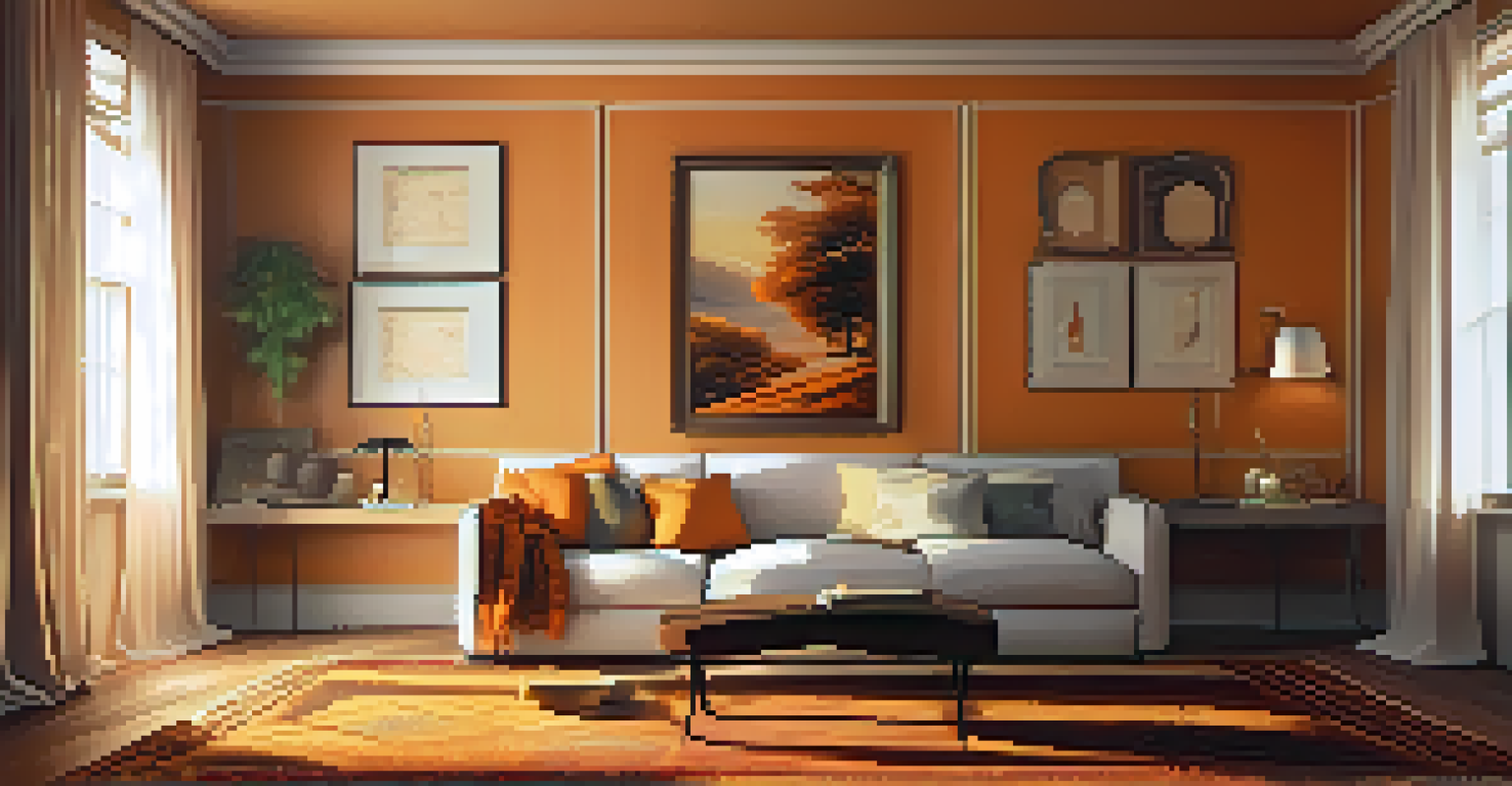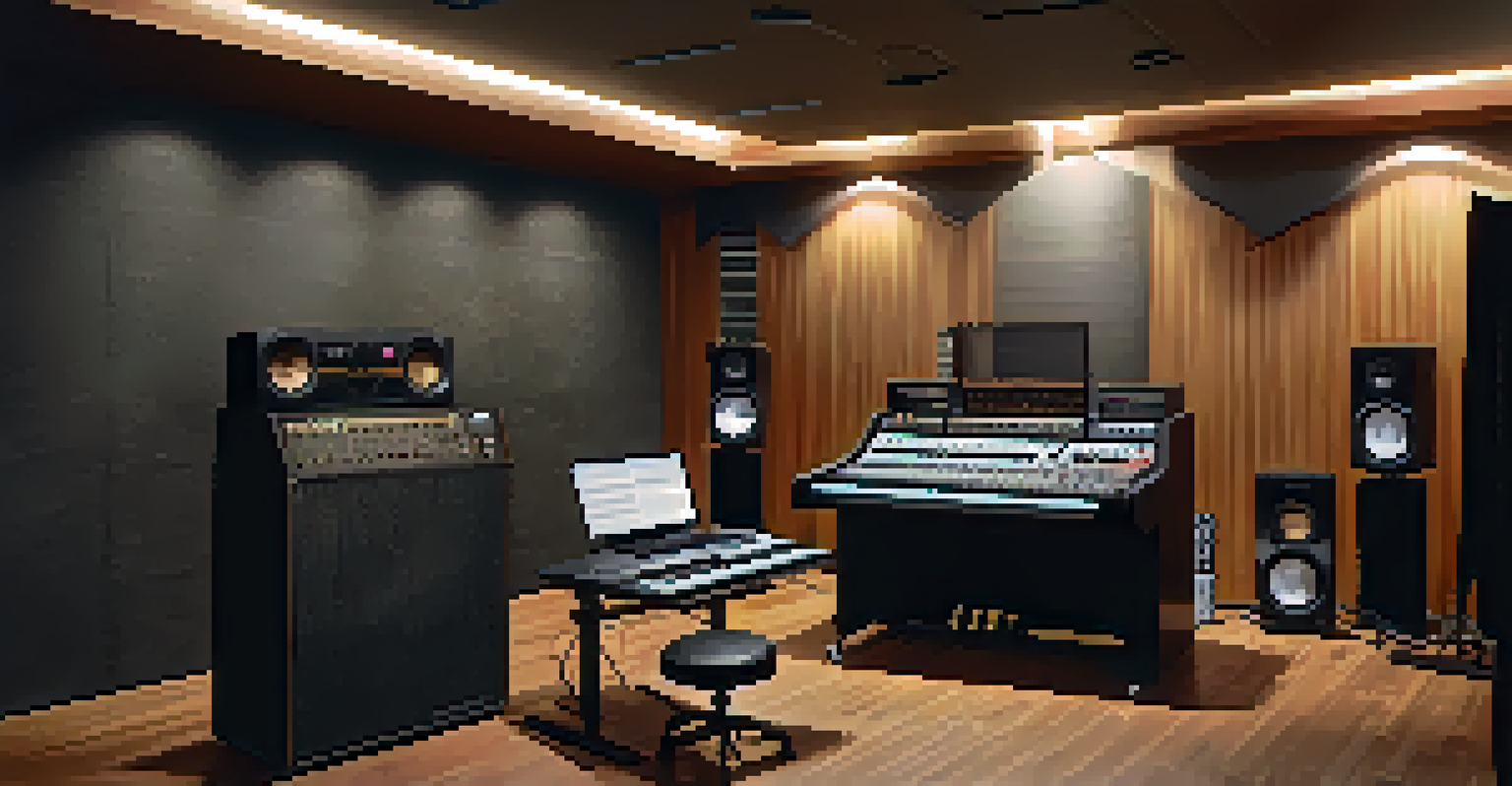The Role of Wall Materials in Guitar Sound Reflection

Understanding Sound Reflection in Music Spaces
Sound reflection is a crucial element in how music is perceived in a space. When a guitar is played, the sound waves produced do not just travel in a straight line; they bounce off surfaces, creating a rich sound environment. This reflection process can enhance or diminish the quality of the sound depending on the materials surrounding it.
Music is the shorthand of emotion.
Think of a room with hard walls, like concrete or brick. These materials tend to reflect sound waves sharply, which can make the music sound bright and clear, but sometimes a bit harsh. In contrast, softer surfaces, such as carpets or curtains, absorb sound waves, leading to a warmer, more mellow tone.
Ultimately, understanding how sound reflection works helps musicians and sound engineers design spaces that complement the music being played. This is why the choice of wall materials is so important in studios, practice spaces, and performance venues.
The Impact of Hard Wall Materials on Guitar Sound
Hard wall materials like concrete, brick, and glass have a significant impact on guitar sound reflection. These surfaces tend to reflect sound waves with high intensity, which can enhance the brightness and clarity of the notes produced. However, this can sometimes lead to an overly sharp sound that lacks warmth and depth.

For instance, a guitarist practicing in a room with bare walls may notice that their music feels a bit ‘hollow’ or overly resonant. This is because the hard surfaces are sending sound waves bouncing around the room without enough soft surfaces to absorb some of the excess energy.
Sound Reflection Shapes Music Quality
The materials and shape of a room significantly influence how sound waves interact, affecting the overall quality of music.
While hard materials can create an exciting sound, they also require careful management to avoid overwhelming the listener. Musicians often combat this by incorporating furniture or acoustic panels to balance the sound.
Soft Wall Materials and Their Sound Absorption Qualities
Soft wall materials, such as fabric, foam, or wood, play a different role in sound reflection. These materials are excellent at absorbing sound waves, which can help to create a more intimate atmosphere. When a guitar is played in such an environment, the sound tends to be warmer and more rounded.
The piano is able to communicate the subtlest universal truths by means of wood, metal, and vibrating air.
Imagine strumming your guitar in a room with plush carpeting and heavy drapes. The sound feels enveloped and cozy, allowing for a rich tonal quality that enhances the overall listening experience. This is especially beneficial for acoustic guitars, which thrive in environments that promote their natural sound.
However, too much sound absorption can lead to a lack of clarity and definition in music. Therefore, finding the right balance between hard and soft materials is essential for achieving the desired sound.
Combining Materials for Optimal Sound Reflection
To achieve the best sound quality, many musicians and sound engineers recommend a combination of both hard and soft materials. This mixture allows for a richer sound palette, where clarity and warmth coexist. By strategically placing acoustic panels alongside hard surfaces, it's possible to control the sound reflections effectively.
For instance, a studio might feature concrete walls for their sharp reflection qualities while incorporating foam panels to absorb excessive highs. This creates a controlled environment where the guitar's sound can be both bright and warm, appealing to a wide range of music styles.
Balance Hard and Soft Surfaces
A combination of hard and soft wall materials ensures both clarity and warmth in sound, enhancing the listening experience.
Using a blend of materials not only enhances sound quality but also adds visual interest to the space. This thoughtful design approach can inspire creativity and elevate the overall experience for musicians and listeners alike.
The Role of Room Shape in Sound Reflection
The shape of a room significantly influences how sound reflects off walls. Rectangular rooms, for example, can create standing waves that may amplify certain frequencies, leading to a skewed sound experience. Musicians might find that their guitar sounds different depending on where they are positioned in the room.
Conversely, irregularly shaped rooms can help to diffuse sound waves more evenly. This can mitigate the effects of standing waves and allow for a more balanced sound, making it easier for musicians to achieve the desired tonal quality.
Understanding the room's shape in conjunction with wall materials helps musicians optimize their practice and performance spaces. This proactive approach can lead to a more enjoyable and effective musical experience.
How Wall Colors Affect Perception of Sound
Interestingly, wall colors can also influence how we perceive sound in a room. While they might not directly affect sound waves, colors can impact our emotional response and the overall ambiance. Warmer colors, like reds and oranges, may evoke feelings of energy, while cooler colors, like blues and greens, can create a calming atmosphere.
When playing guitar in a brightly painted room, the musician may feel invigorated, potentially playing with more enthusiasm. On the flip side, a softly painted room may encourage a more relaxed and introspective playing style. Essentially, the colors set the mood for the music being created.
Wall Colors Impact Musical Mood
The colors of a room can evoke emotional responses that influence a musician's performance and the ambiance of the music.
This connection between wall colors and sound perception emphasizes the importance of the overall environment in music. Musicians should consider not just the acoustics but also the visual elements that can enhance their performance.
Choosing the Right Materials for Your Space
When it comes to choosing wall materials for guitar practice or performance spaces, there are several factors to consider. Musicians should first think about the type of sound they wish to create. If they prefer a bright, clear tone, hard materials might be the way to go. Alternatively, for a warm, mellow sound, soft materials could be more suitable.
It’s also essential to consider the room's purpose. A recording studio may benefit from a more balanced approach, using a mix of materials to control sound reflections. In contrast, a performance space might prioritize one sound quality over another based on the genre of music being played.

Ultimately, the right wall materials can enhance a musician's sound and overall experience. By experimenting with different combinations, musicians can discover the perfect setup for their unique sound.